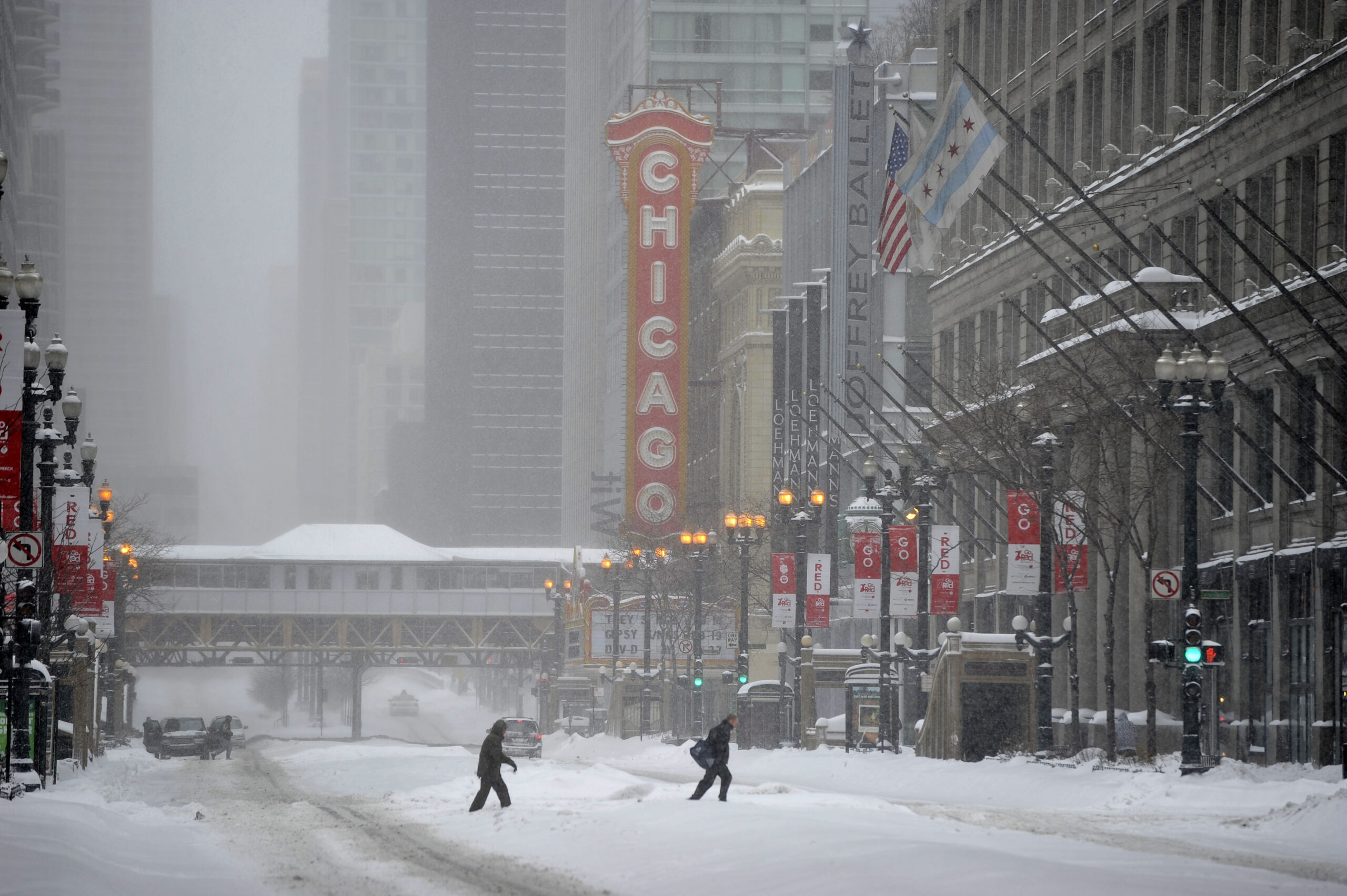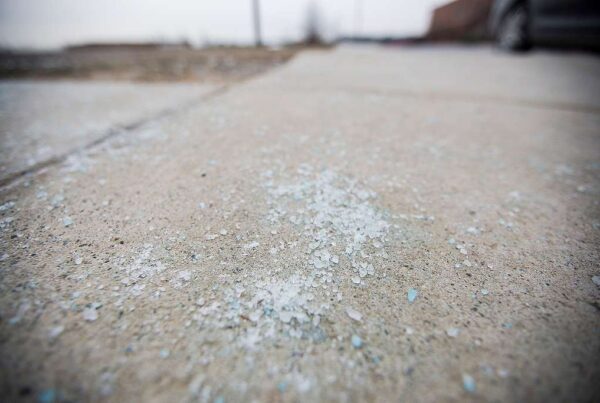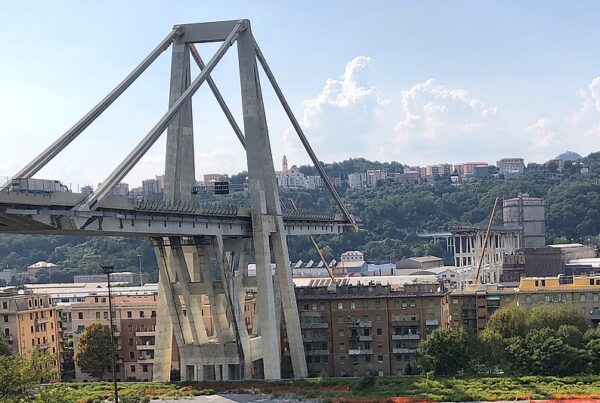Chicago winters are notorious for their harsh conditions, with freezing temperatures, heavy snowfall, and frequent freeze-thaw cycles. As snow and ice accumulate on building surfaces, such as driveways, parking garages, roofs, and sidewalks, the snowmelt process introduces significant challenges for building materials like concrete, asphalt, metal, and wood. The extreme weather fluctuations, combined with the use of deicing substances, can cause serious damage to these materials, leading to cracks, structural weaknesses, and costly repairs. In this post, we’ll examine how Chicago’s winter snowmelt impacts different building elements and how the substances used to control snow and ice affect their long-term durability.
Impact on Concrete and Asphalt Driveways
Concrete and asphalt driveways are particularly vulnerable to snowmelt due to the freeze-thaw cycle. When snow and ice melt, water can seep into small cracks in the surface. As temperatures drop again, the trapped water freezes, expands, and widens the cracks. Over time, this process weakens the driveway, leading to potholes, surface deterioration, and the need for resurfacing or replacement. The frequent use of deicing chemicals exacerbates this damage, as salts can chemically react with concrete, causing further degradation. While asphalt is more resistant to chemical reactions, it remains susceptible to physical damage from water expansion during freezing.
Parking Garages and Their Vulnerabilities
Parking garages, often constructed from concrete, face significant challenges from snowmelt. Moisture can infiltrate joints, cracks, and porous surfaces, leading to corrosion of steel reinforcement bars (rebar). This corrosion compromises the garage’s structural integrity, causing spalling (flaking of concrete) and other forms of deterioration. Snowmelt runoff mixed with deicing chemicals increases the exposure of the concrete to harmful substances like chlorides, which accelerate rebar corrosion. Without proper maintenance, these issues can lead to costly repairs or even structural failure.
Concrete Sidewalks and Stairs
Concrete sidewalks and stairs experience similar issues to driveways and parking garages but face additional challenges due to foot traffic and the need for slip resistance. The freeze-thaw cycle and deicing agents cause surface scaling, cracking, and the breakdown of slip-resistant finishes. Stairs are particularly vulnerable because water tends to pool on steps, increasing the likelihood of freeze-thaw damage. While proper drainage solutions and timely snow removal can help, sidewalks and stairs will likely require repairs or replacement over time in snowy climates.
Roofs and Gutters: Water Management and Structural Concerns
Roofs, especially flat or low-slope types, are also affected by snowmelt. Accumulated snow can put stress on the roof, and when it melts, water pooling becomes a problem if drainage systems are not functioning correctly. In colder regions, ice dams may form along roof edges, preventing melted snow from draining properly and leading to leaks, water damage, or structural issues inside the building. Roof materials, such as asphalt shingles or metal roofing, can degrade from continuous exposure to snowmelt and the freeze-thaw cycle. Proper insulation and ventilation are essential for managing snowmelt on roofs and preventing long-term damage.
Substances Used to Control Snow and Ice
Various substances are used to control snow and ice on building elements, including rock salt (sodium chloride), calcium chloride, magnesium chloride, and potassium acetate. Rock salt is the most common but is highly corrosive and can cause extensive damage to concrete, metal, and other materials. Calcium chloride and magnesium chloride are less corrosive and work more effectively at lower temperatures, but they still pose risks to building materials over time. Potassium acetate is often used in sensitive environments like airports due to its lower environmental impact, though it can still contribute to material degradation if overused. While these substances are crucial for maintaining safety, prolonged exposure can lead to costly maintenance and repairs.
Conclusion
Snowmelt, combined with the freeze-thaw cycle, presents significant challenges for building materials, such as concrete, asphalt, roofs, and stairs. The repeated expansion and contraction of water, along with the chemical effects of deicing agents, accelerates the deterioration of these materials, resulting in costly repairs and reduced structural integrity. Understanding the impact of snowmelt on building elements and using appropriate snow and ice control measures are key to ensuring long-term building maintenance. Building owners and managers must be proactive in snow and ice management by selecting less corrosive substances and implementing proper drainage systems to safeguard their structures from the damaging effects of snowmelt.




